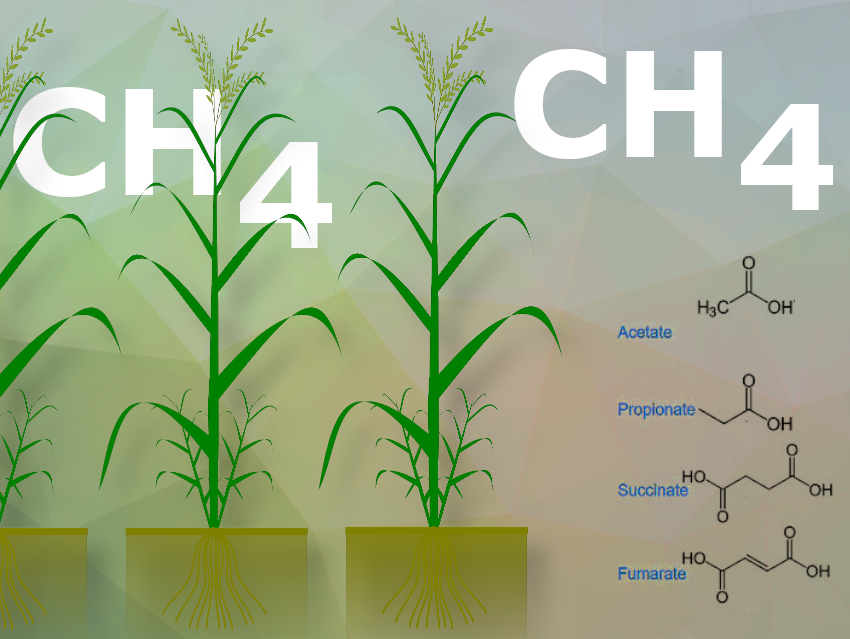Why does rice cultivation emit methane? Which compounds released by rice roots determine methane emissions?
Rice cultivation emits methane because the fields are often flooded, leading to oxygen depletion in the soil. This creates favorable conditions for methanogenic microorganisms, which convert organic matter into methane. Rice is one of the world’s most important food crops and contributes around 12% of global methane emissions.
Methanogens break down secretions from the roots of the plants. However, the dominant compounds relevant for this remained unclear. What is clear is that secreted carbohydrates and organic acids contribute to methane emissions.
Anna Schnürer and Chuanxin Sun, Swedish University of Agricultural Sciences (SLU), Uppsala, Sweden, and colleagues have discovered that fumarate and ethanol are two major secretions of rice that play a key role in regulating methane emissions. The team compared root exudates from two different rice varieties: SUSIBA2, a low-methane emitting genetically modified organism (GMO) variety, and Nipponbare, a non-GMO cultivar with average methane emissions.
The researchers found that fumarate promotes the growth of methanogenic microbes, leading to methane emissions, while ethanol inhibits methanogen activity and growth, and reduces fumarate production in the rice root. The team mapped the metabolism of fumarate and found that it is produced in the rice root from acetate via propionate and succinate, and when released directly into the soil, is oxidized to propionate before being converted via acetate to methane as the end product.
The team used this knowledge for hybrid breeding of new rice varieties with lower methane emissions. In field trials over three years, they reduced methane production from several rice fields by up to 70%. In addition, these low-fumarate, high-ethanol (LFHE) rice crops have high yields—averaging 8.96 tons per hectare, compared to the 2024 global average of 4.71 tons per hectare.
According to the researchers, their findings offer great potential for effectively mitigating the global climate impact of rice cultivation. They are also working on studies if Oxantel could be added to fertilizers. Oxantel is a deworming drug used in humans and animals and it inhibits the enzymatic breakdown of fumarate.
- Reducing methane emissions by developing low-fumarate high-ethanol eco-friendly rice,
Yunkai Jin, Tong Liu, Jia Hu, Kai Sun, Lihong Xue, Mathilde Bettembourg, Girma Bedada, Pengfu Hou, Peiying Hao, Jintian Tang5 ∙ Zihong Ye5 ∙ Chunlin Liu, Peng Li, Aihu Pan, Lushui Weng, Guoying Xiao, Ali A. Moazzami, Xiaoping Yu, Jun Wu, Anna Schnürer, Chuanxin Sun,
Molecular Plant 2025, 18(2), 333-349.
https://doi.org/10.1016/j.molp.2025.01.008





